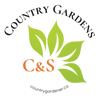An herb is any plant used whole or in part as an ingredient for health, flavor, or fragrance. Herbs can be used to make teas; perk up cooked foods such as meats, vegetables, sauces, and soups; or to add flavor to vinegars, butters, dips, or mustards. Many herbs are grown for their fragrance and are used in potpourris, sachets, and nosegays; or to scent bath water, candles, oils, or perfumes. More than 25% of our modern drugs contain plant extracts as active ingredients, and researchers continue to isolate valuable new medicines from plants and confirm the benefits of those used in traditional folk medicine.
Herbs as a group are relatively easy to grow. Begin your herb garden with the herbs you enjoy using the most. For example, choose basil, oregano, and fennel for Italian cooking; lavender and lemon verbena for making potpourri; or chamomile, peppermint, and blue balsam mint if you plan to make your own teas.
The optimum growing conditions vary with each individual herb species. Some of the herbs familiar to North Americans, such as lavender, rosemary, thyme, bay laurel, marjoram, dill, and oregano are native to the Mediterranean region. These herbs grow best in soils with excellent drainage, bright sun, and moderate temperatures.
When growing herbs follow these basic guidelines:
- Plant herbs in average garden soil with organic matter added to improve texture and drainage.
- Choose a site that receives at least 6 hours of direct sun each day.
- Avoid ground where water stands or runs during heavy rains.
- Compensate for poor drainage with raised beds amended with compost.
- Apply balanced fertilizers sparingly to leafy, fast-growing herbs. Heavy applications of fertilizer, especially those containing large amounts of nitrogen, will decrease the concentration of essential oils in the lush green growth.
Plan your herb garden by grouping herbs according to light, irrigation, and soil requirements. Most herbs enjoy full sun, but a few tolerate shade. Herbs can be classified as either annual, biennial, or perennial. Be aware of the growth habits of the plants before you purchase them. Some herbs, such as borage, anise, caraway, chervil, coriander, cumin, dill, and fennel, should be direct-seeded, because they grow easily from seed or do not transplant well. Other herbs, such as mints, oregano, rosemary, thyme, and tarragon, should be purchased as plants and transplanted or propagated by cuttings to ensure production of the desired plant (do not come true from seeds).
